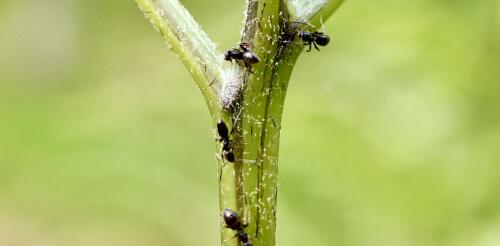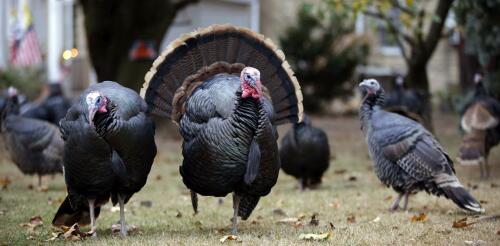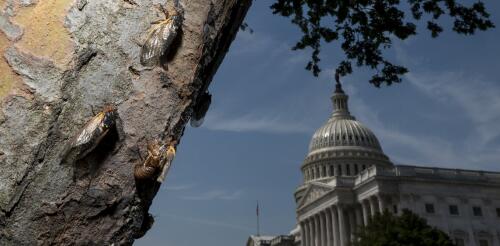Insects
The most significant predictors of bug biodiversity in Los Angeles are proximity to the mountains and temperature stability throughout the year, according to a study we co-authored with Brian V. Brown of the Los Angeles Natural History Museum and colleagues at the University of Southern California and California State University. The project used data from the museum’s BioSCAN project, where volunteers across Los Angeles allowed insect traps to be installed on their property between 2014 and 2018. Arthropod species richness in Los Angeles. Black dots show locations where the BioSCAN project collected bugs between 2014-2018. The color scale shows the predicted number of species, with blue being the least rich and orange being the most rich. Map tiles by Stamen Design, CC BY-SA The analysis showed some surprising results. For instance, land values had little impact on the overall diversity of art...
Look closely at a plant in your local park, your garden or even your kitchen, and you’re likely to see some damage. Whether a caterpillar has chewed away part of a leaf or a mealybug is sucking on sap, animals are constantly feeding on plants. Of course, herbivory, or plant predation, is not ideal for a plant’s survival. So plants have evolved many different defense mechanisms to inhibit this threat, including physical and chemical weapons. For example, cactuses arm their bodies with skin-piercing spines. Herbs such as mint, lavender and rosemary produce volatile scent compounds that can help deter herbivores. Other plants resort to bribing personal bodyguards by secreting thick, sweet nectar. Nectar is most commonly associated with flowers, where it is used to entice bees, birds or butterflies to move pollen from one flower to another. But other plants produce different types of nectar glands called extrafloral nectaries. Plants produce these glands to bribe ants...
It’s a simple idea: Stop mowing your lawn in the month of May to let flowers in the lawn, such as dandelions and clover, grow and support bees and other pollinators. “No Mow May” was started in 2019 by Plantlife, a conservation charity based in the United Kingdom, in response to a well-documented loss of meadows and an alarming decline of native plants and animals there. Since then, it has been taken up by many gardeners and conservation advocates in North America. Studies have shown that many flowers that grow in unmown British lawns do support British pollinators. But North America has vastly different ecological communities, composed of unique flora and fauna. If you are interested in supporting pollinators, it is important to consider the ecological context of your yard – and #NoMowMay may not be an effective strategy. As entomology researchers who run programs on pollinators, we see better ways for people in North America to help pollinators fl...
Birdsong is a welcome sign of spring, but robins and cardinals aren’t the only birds showing off for breeding season. In many parts of North America, you’re likely to encounter male wild turkeys, puffed up like beach balls and with their tails fanned out, aggressively strutting through woods and parks or stopping traffic on your street. Wild turkeys were abundant across North America when European settlers arrived. But people killed them indiscriminately year-round – sometimes for their meat and feathers, but settlers also took turkey eggs from nests and poisoned adult turkeys to keep them from damaging crops. Thanks to this unregulated killing and habitat loss, by 1900 wild turkeys had disappeared from much of their historical range. Turkey populations gradually recovered over the 20th century, aided by regulation, conservation funding and state restoration programs. By the early 2000s, they could be found in Mexico, Canada and every U.S. state except Alask...
In the wake of North America’s recent solar eclipse, another historic natural event is on the horizon. From late April through June 2024, the largest brood of 13-year cicadas, known as Brood XIX, will co-emerge with a midwestern brood of 17-year cicadas, Brood XIII. This event will affect 17 states, from Maryland west to Iowa and south into Arkansas, Alabama and northern Georgia, the Carolinas, Virginia and Maryland. A co-emergence like this of two specific broods with different life cycles happens only once every 221 years. The last time these two groups emerged together was in 1803, when Thomas Jefferson was president. For about four weeks, scattered wooded and suburban areas will ring with cicadas’ distinctive whistling, buzzing and chirping mating calls. After mating, each female will lay hundreds of eggs in pencil-size tree branches. Then the adult cicadas will die. Once the eggs hatch, new cicada nymphs will fall from the trees and burrow back underground, st...




